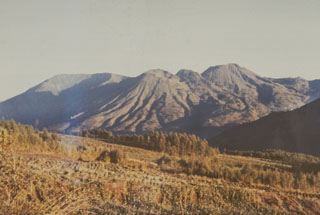Report on Dieng Volcanic Complex (Indonesia) — 13 September-19 September 2017
Smithsonian Institution / US Geological Survey
Weekly Volcanic Activity Report, 13 September-19 September 2017
Managing Editor: Sally Sennert.
Please cite this report as:
Global Volcanism Program, 2017. Report on Dieng Volcanic Complex (Indonesia) (Sennert, S, ed.). Weekly Volcanic Activity Report, 13 September-19 September 2017. Smithsonian Institution and US Geological Survey.
Dieng Volcanic Complex
Indonesia
7.2°S, 109.879°E; summit elev. 2565 m
All times are local (unless otherwise noted)
PVMBG reported that during 8 July-14 September measurements indicated an increase in water temperature at Sileri Crater lake (Dieng Volcanic Complex) from 90.7 to 93.5 degrees Celsius. Soil temperatures also increased, from 58.6 to 69.4 degrees Celsius. At Timbang Crater temperatures in the lake increased from 57.3 to 62.7, and in the soil they decreased from 18.6 to 17.2. The report noted that conditions at Timbang Crater were normal. Temperature increases at Sileri, along with tremor detected during 13-14 September, prompted PVMBG to raise the Alert Level to 2 (on a scale of 1-4). PVMBG warned the public to stay at least 1 km away from the crater rim, and for residents living within that radius to evacuate.
Geological Summary. The Dieng plateau in the highlands of central Java is renowned both for the variety of its volcanic scenery and as a sacred area housing Java's oldest Hindu temples, dating back to the 9th century CE. The Dieng Volcanic Complex consists of multiple stratovolcanoes and more than 20 small Pleistocene-to-Holocene craters and cones over a 6 x 14 km area. Prahu stratovolcano was truncated by a large Pleistocene caldera, which was subsequently filled by a series of cones, lava domes, and craters, many containing lakes. Lava flows cover much of the plateau, but observed activity has been restricted to minor phreatic eruptions. Gas emissions are a hazard at several craters and have caused fatalities. There are abundant thermal features and high heat flow across the area.
Source: Pusat Vulkanologi dan Mitigasi Bencana Geologi (PVMBG, also known as CVGHM)

